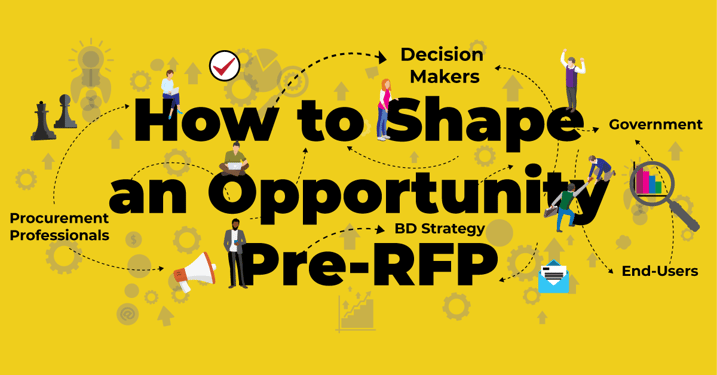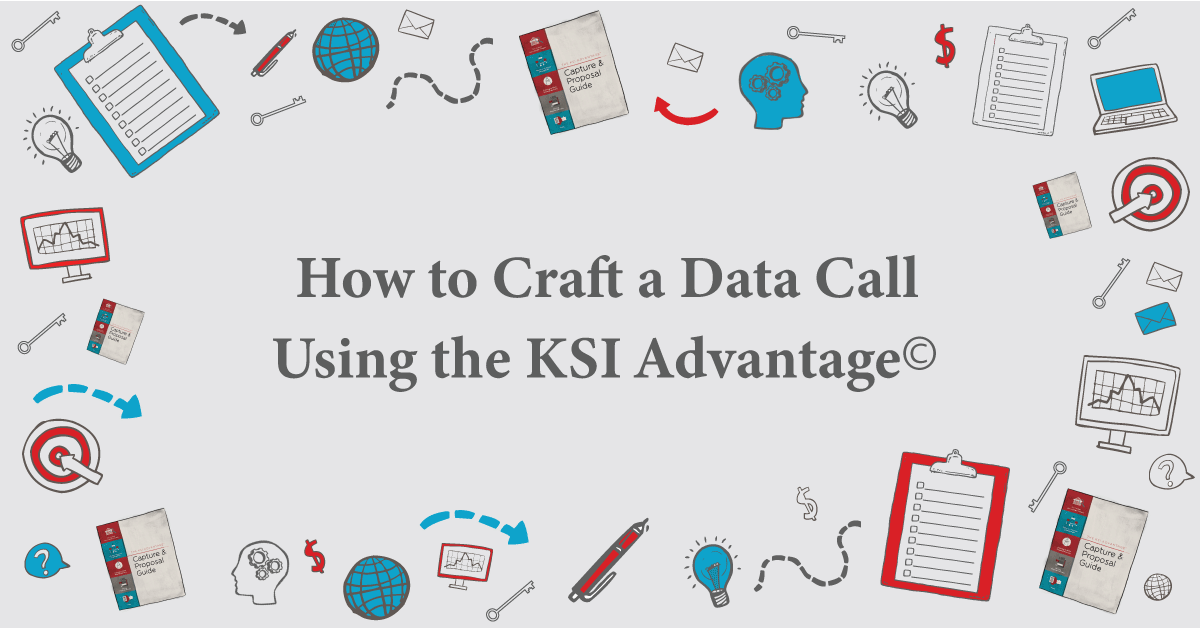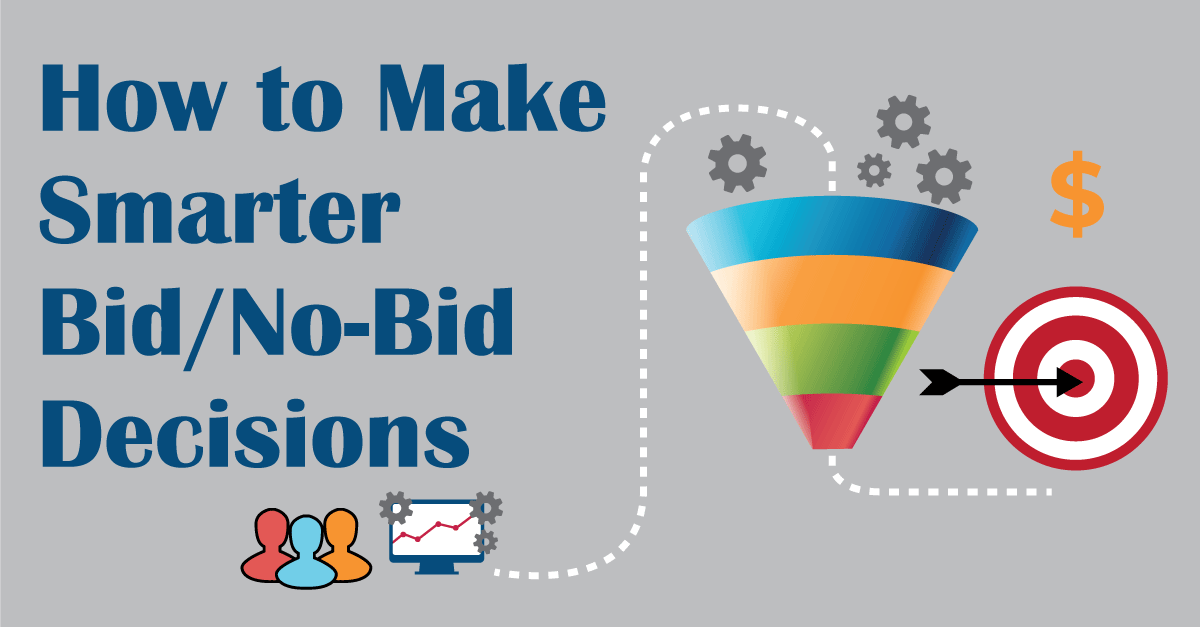
Too often, businesses jump into pursuing contract opportunities without doing the necessary work on the front end.
When developing a product to bring to market, commercial companies invest time and money into researching their target audience and their specific needs, knowing that this step is necessary to have the most success.
When the right customer is aligned with the right product (and the right benefits are advertised), money flows.
Why should selling to the Government be any different?
There is a lack of emphasis on the impact of Business Development activities across the industry when pursuing Government contract opportunities.
Many companies underestimate the importance—and profit potential— of targeting the right individuals and personas with specific messaging to drive the value of their solution and, ultimately, help shape RFP requirements.
In this article, we break down the three most important people your Business Development teams should target to enable your company to win more contracts.
Targeting the Right People
For decades, Federal Business Development teams have relied heavily on dense, interconnected relationship networks.
While well-developed relationships are important to most aspects of sales, it can be difficult to measure the quality of a network. Decision makers on one program may play a secondary role on another. Like we learned from the childhood game, “telephone,” secondary information—while usually funny—isn’t always accurate.
It’s more beneficial to go directly to the source, and in order to do so, we must target the right people.
When we meet with the right people, not only can we capture the most valuable and accurate information, we can also take advantage of an opportunity to shape the requirements in our favor.
Here are the three categories of people to target when scouting an opportunity:
- Procurement Professionals
- Decision Makers
- End Users
1. Procurement Professionals
The Procurement team may or may not be as familiar with the technical side of the solutions they’re evaluating. Still, they can provide valuable information about budget, timeline, and who has the authority to make decisions within the scope of an opportunity.
Examples of Procurement Professionals may include but not be limited to Procurement Contracting Officer (PCO), Contracting Officer (CO), Contracting Officer Representative (COR), Ordering Contracting Officer (OCR), and Contracting Officer’s Technical Representative (COTR).
In other words, the Procurement team has a good understanding of who the Source Selection Board will be made up of and who will ultimately select the winning bid.
Consistent check-ins and periodic sharing of Past Performance references and case studies will keep the procurement team engaged with you throughout the procurement timeline as you focus your efforts across the agency.
Some relevant questions to ask the procurement team are:
- How much have you spent on similar solutions?
- What has worked and hasn’t worked with your current solution?
- Is this bid up for a recompete?
- Do you have a budget set aside for next year?
- When is the RFP expected?
- Is there anything specific that your leadership is looking for different from last time?
Many organizations never set their business development sights beyond the procurement team and end up selling themselves short. If you stop here, you miss out on influencing other critical decision makers.
Although Procurement provides useful information about the logistics of an opportunity, it’s hard to gain a deep understanding of the full picture.
To get an inside look at the needs of your customer and put yourself in a better position to provide a winning solution, you’ll also need to connect with the Decision Makers and End Users.
2. Decision Makers
Understanding who the Decision Maker(s) are for the Opportunity is crucial to ensuring the final sign-off and an engaged executive team throughout the project's lifecycle.
A Decision Maker is someone in the department or agency with a direct voice in who is chosen for the contract. Most often, the Decision Makers will be a part of the Source Selection Authority or Source Evaluation Board. He or she will usually:
- Understand the strategic vision of the program or opportunity
- Have final authority on decisions
- Hold the title of C-Level or similar
- Understand the timeline and budget for the opportunity
- Measure the performance and outcome of the project
- Directly benefit from the solution provided
The Decision Maker’s role is to focus on how the program or solution will help meet the overall strategic goals of their department or agency. Therefore, it’s important to identify relevant information regarding the difference between the current and desired state of their business.
Some insightful questions include:
- What strategic goals are you responsible for meeting within your specific department?
- Do you feel that your team is maximizing the solution you have now?
- Do you have upcoming programs focused on your overall mission?
- What are the most pressing challenges you are currently facing?
- Are you looking for a new solution?
- What is the motivation for searching for a new solution?
- What specific results are you looking for?
- Which metrics will be used to evaluate the success of the solution?
- What kind of partner are you looking for?
Finding and connecting with Decision Makers enables your company to capture key points of emphasis (e.g., pain points, financial concerns, desire for innovation), identify the department or agency’s overarching strategic goals, and facilitate executive buy-in throughout the life of the contract, thus strengthening your position as a trusted advisor.
3. End Users
While the end users of your solution may not have the final say in which company is awarded the contract, they can provide useful insight into what underlying benefits they are looking for.
The end users are tactical, feature-oriented, and intimately familiar with the current solution, or if the contract is new, the current need for a new solution.
Regardless of the contract, end users are the recipients of a solution. This could include, members of our Armed Forces, embassy staff, incumbent O&M staff, etc.
By meeting with the people who are most directly affected by your solution and who have the most information regarding the overall connotation of the current state, your company can capture vital intelligence about the program, including its gaps and shortcomings.
Some relevant questions for the end users include:
- Could you help me understand what you like about your current solution?
- Are there any bottlenecks in the current solution?
- What do you like best about your current system? What would you like to see changed?
- What level of service would you like to see?
- What do you wish senior leadership knew about gaps in the solution?
Developing a relationship with the end users of your solution and taking the time to discover what benefits they’re looking for will not only provide your company with the opportunity to adjust what you’re offering to provide a better solution but will also allow you to acquire an internal champion.
If your company can offer an attractive solution that directly responds to their pain points, the end users may even suggest the inclusion of a requirement that only your company can deliver, putting you in a better position to win.
CONCLUSION: So, is your team meeting with the right people?
Understanding and developing a thorough and targeted Business Development Process may seem tedious and unnecessary, but the benefits are massive. When you take the time to build a solid foundation by developing relationships with the right people, the initial lift to capture and proposal development becomes much lighter.
After gaining insight from the Procurement Professionals, Decision Makers, and End Users, you’ll be able to develop and deliver a solution that is tailored to the specific opportunity, all while keeping your company’s name in the minds of the people who matter: all the stakeholders of your solution.
Does your firm need help building an effective Capture process and an actionable roadmap? Contact Key Solutions.








